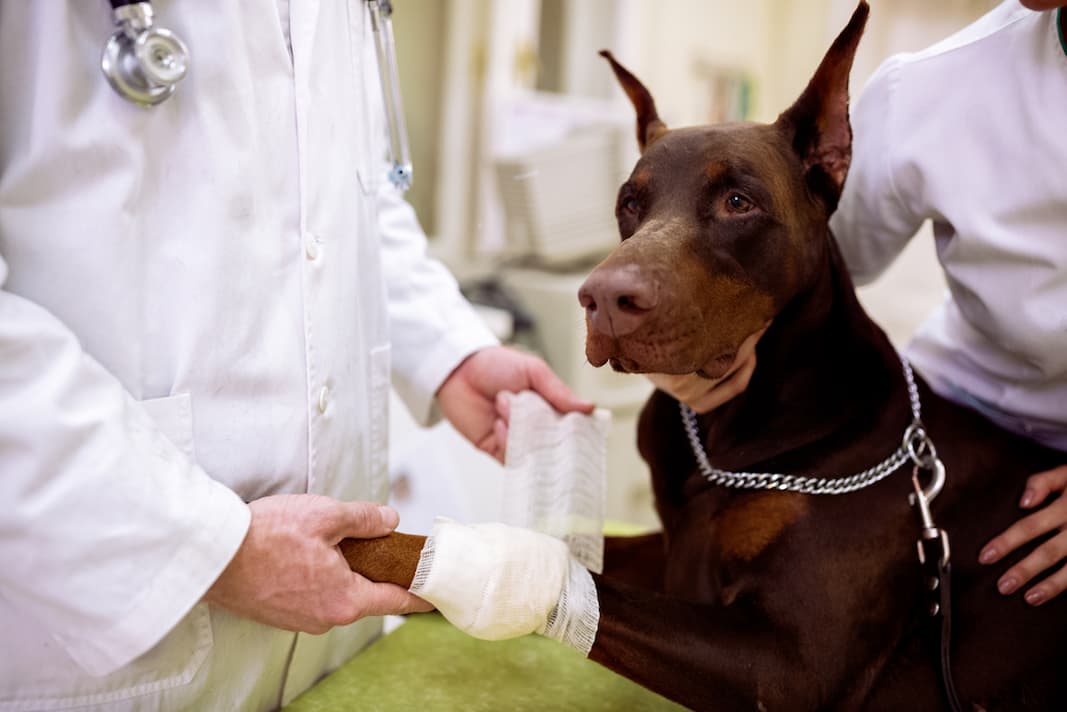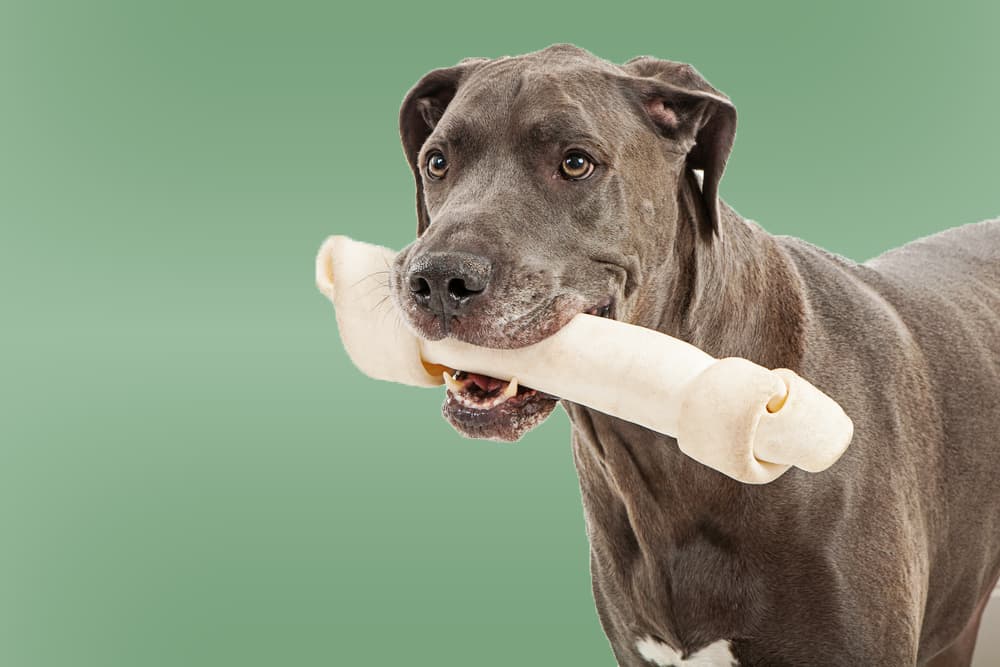
Osteoarthritis

Our guide has been authored by qualified veterinarians, but should not be taken as substitute for medical advice or professional veterinary consultation. If your pet displays any unusual symptoms, we strongly advise seeking guidance from a veterinarian
Understanding Osteoarthritis in dogs
The joints are the meeting point between the bones of the body and their role is to allow smooth movement and prevent shock. They consist of cartilage and synovial fluid encased in a capsule. In degenerative joint disease, there is erosion of the joint cartilage and a decrease in the viscosity of the joint fluid. This leads to joint inflammation (Osteoarthritis) which includes swelling and pain, as well as chronic changes in the bones of the joint. These changes over time cause stiffness of the limbs and a significant limitation in mobility and movement. Degenerative inflammation will appear in dogs mainly in the hip, knee, elbow, and joints, and may appear in only one of them or several at the same time.
Osteoarthritis's Causes: Uncovering Triggers
- Developmental anatomical diseases – Issues during the growth phase such as hip dysplasia or elbow dysplasia can result in abnormal joint formation, which over time may become inflamed.
- Genetic predisposition – Osteoarthritis is highly prevalent, particularly in large and giant breeds, due to genetic factors.
- Aging – As years pass, cartilage and synovial fluid gradually lose their vitality, increasing the risk of joint inflammation.
- Excess weight and obesity – Considered complicating factors, they exert additional stress on inflamed joints, exacerbating structural changes, pain, and impairing movement.
- Physical inactivity – A sedentary lifestyle raises the likelihood of early joint degeneration.
- Inadequate or deficient nutrition – Lack of specific nutritional components can contribute to osteoarthritis.
 Recognizing Osteoarthritis: Signs and Symptoms
Recognizing Osteoarthritis: Signs and Symptoms
- Limping: Can be constant or intermittent, on one leg or several. It is usually most pronounced at the beginning of the day, after prolonged lying down ("cold" limping), or after strenuous activity.
- Abnormal gait: Swinging of the hip when there is a hind limb injury or downward head movement in the case of a forelimb injury.
- Difficulty rising: From a lying or sitting position. It appears as if the dog is "stretching" more until it manages to stand up.
- Difficulty in movement: Difficulty going up or down stairs, jumping on furniture, high places, or into the car.
- Stiffness of the body
- Irritability and aggressiveness: May manifest when touched or approached near the painful joint, or even without a discernible cause.
- Whimpering and pain during stretching or playtime
- Licking or chewing the painful area
- Urination or defecation difficulties: Especially in the case of hind limb or hip pain.
- Avoidance of physical activity: Reluctance to run or play.
- Heat and swelling in the joints: In this case, suspicion of osteoarthritis due to infectious or autoimmune causes should arise.
- Loss of appetite
 Osteoarthritis Diagnosis: How it's Identified
Osteoarthritis Diagnosis: How it's Identified
The initial suspicion arises from patient identification – age, size, breed, and similar issues in the parents. Then, the veterinarian will request details about the disease history – when the signs first appeared, whether it occurs at specific times of the day, whether there have been similar events in the past, and so on. The veterinarian will then conduct a movement examination, including observing the dog walking and running, to look for suspicious signs in the way it walks or limps. Concurrently, a comprehensive physical examination will also be performed with an orthopedic focus – palpation of all limbs, movement of all joints, and palpation of the spine. The purpose of this examination is to assess whether there is pain and restriction in the range of motion in the various joints. After the examination, it may be recommended to perform an X-ray in the suspected problematic joint area to assess the rate of degenerative change and the severity of the disease in order to determine the best course of treatment.
 Treating Osteoarthritis: Options and Approaches
Treating Osteoarthritis: Options and Approaches
This is a chronic disease that cannot be cured, but it can definitely be managed to alleviate its clinical signs, reduce pain, and maintain a high quality of life for a long time. The ideal treatment typically includes:
- Changes in lifestyle – maintaining a proper body weight to reduce the load on the joints and adhering to regular and moderate physical activity, while avoiding sharp movements or excessive physical activity.
- Dietary changes – Food supplements as an addition to medical treatment, essential fatty acids such as omega-3, and cartilage-building substances that can help preserve joint function.
- Medicinal treatments – Non-steroidal anti-inflammatory drugs (NSAIDs) are considered the most effective and readily available treatment for managing disease symptoms, especially in advanced stages. Often, pain relievers may also be combined. Steroids are usually reserved for situations where regular anti-inflammatories are not effective. Cannabidiol (CBD) oil is also found to be effective in reducing chronic inflammation and pain. Recently, immunological drugs, considered highly effective and safe, have also been added.
- Physiotherapy – This can greatly assist in preserving movement capability and reducing joint pain. Typically, a diagnosis will be made and a long-term treatment plan will be constructed, including exercises, hydrotherapy, and physical activity.
- Intra-articular injections – Local treatments to the joint with various substances: steroids, concentrated platelet-rich plasma (PRP), hyaluronic acid, and stem cells.
- Surgical interventions – Not very common in this disease, but certainly possible in certain cases: Joint removal (in small to medium-sized dogs) or joint replacement (in large dogs) in chronic inflammations resulting from developmental structural problems, or in severe joint inflammations that do not respond to medical treatment.
- Correction of an underlying problem causing secondary osteoarthritis – such as repairing a torn cruciate ligament or correcting a dislocated kneecap.
Osteoarthritis: Surprising Facts

This is the most common orthopedic disease in dogs. Data shows that about 30% of all dogs will suffer from this disease at some point in their lives, with certain breeds like Retrievers having a prevalence of over 50%.

The disease is age-dependent, with most affected dogs being over 8 years old.

Unfortunately, it's one of the leading causes of death in dogs. Not because the disease itself is fatal, but because many cases eventually end in euthanasia when the dog reaches a point where it struggles to stand and control its bodily functions.
 Vet's Tip: Dealing with Osteoarthritis
Vet's Tip: Dealing with Osteoarthritis
Sometimes it can be difficult to identify the signs of osteoarthritis in its early stages, and they may only appear when there is already significant damage to the joint. As mentioned, dogs don’t speak, and many will even hide their pain until it becomes unbearable. Therefore, it’s important to perform early and continuous monitoring on dogs from middle age to old age, especially those with a clear genetic predisposition. Pay attention to small signs that could indicate the disease, such as difficulty getting into a car, reluctance to go for walks, or pauses during walks, for example. Remember, our role is to enable our dogs to live pain-free lives, so don’t hesitate to use medications that can allow them to live pain-free lives.




Price Tag

Latest in Research and Treatments
Non-steroidal anti-inflammatory drugs are considered the most effective treatment for relieving inflammation symptoms. However, they also have many side effects, including potential damage to the kidneys, liver, and intestines. Recently, two new substances have been added to the disease treatment arsenal, showing high effectiveness along with a high long-term safety profile: biological treatment with inhibitors that prevent the neural spread of pain receptors in the inflammation area. This is a new patented drug administered by monthly subcutaneous injection. Recent studies show that CBD oil given twice daily can significantly relieve pain in dogs suffering from osteoarthritis and improve mobility noticeably.
dogs breeds Prone to Osteoarthritis
Did you know?
Enrolling in Animalia Pet Insurance
while your pet is healthy is a wise decision.
Waiting until a disease develops means it won't be covered.














